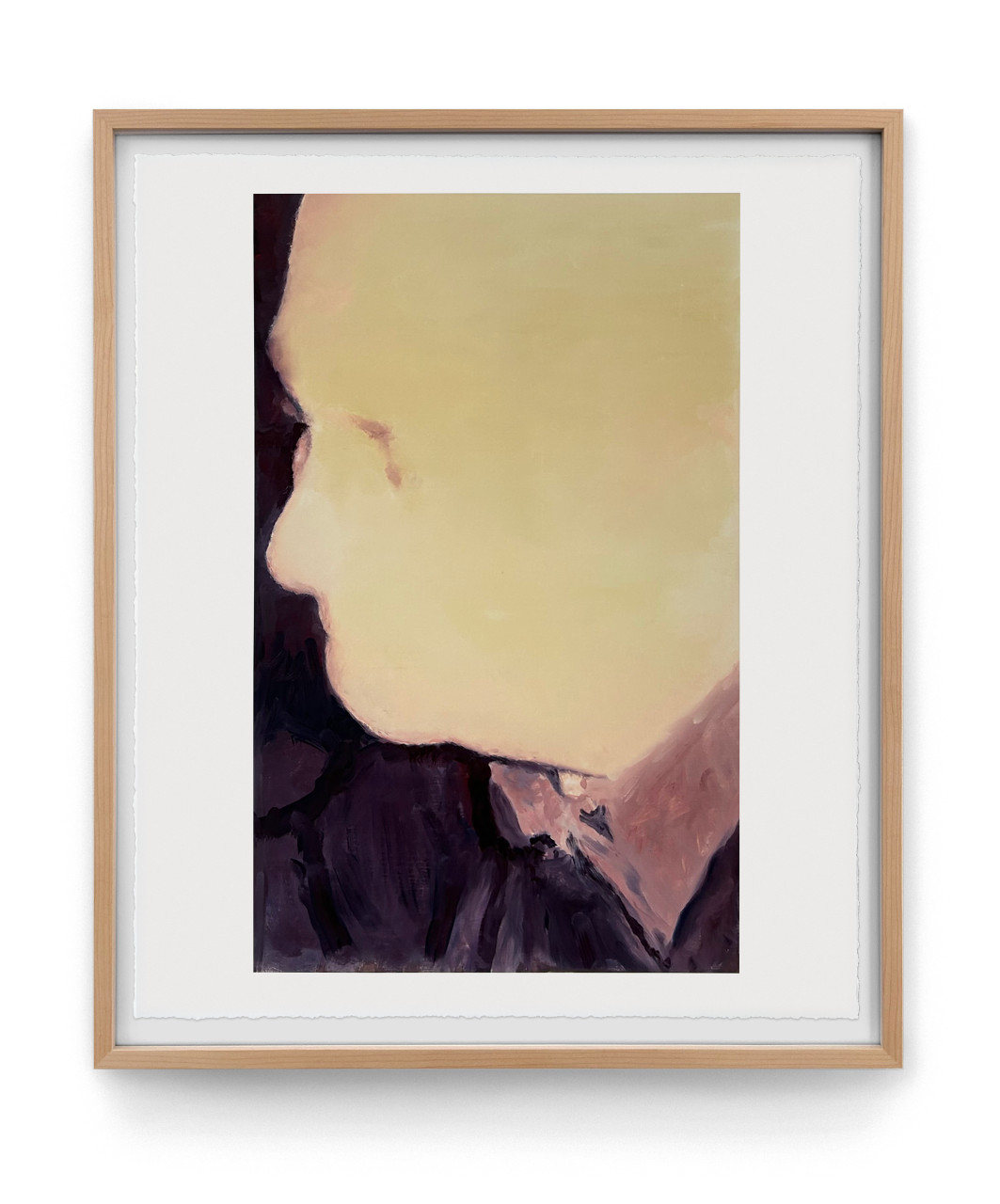FACES – a new group portfolio
Fascinated by the face as a central tool for communication, empathy and recognition, Schellmann Art began inviting artists to create a work dedicated to this topic in 2021. Three years later, we are pleased to present a portfolio of altogether 30 works – made up of single prints, two-part prints, diptychs, and triptychs – by 14 different artists.
The participating artists used a variety of techniques to depict the faces their prints were then based on: painting, mixed-media sculpture, collage work, photography, technology-based image creation and manipulation, and a combination of these. The resulting works include classical portraits as well as distorted, abstract or partial faces, visages as silhouettes, fantasy creations that resemble faces and even one from behind (and therefore not really a face at all). But somehow they all elicit an emotional response in a way that only portraits can – we are biologically programmed to recognise faces, to connect with them, to read emotions, to feel empathy and to relate.
Cory Arcangel used a technique known as "deep frying" to create a 21st-century version of Johannes Vermeer's famous portrait painting Girl with a Pearl Earring from 1665. The artist wrote code to recursively tweak the image using common image manipulation techniques such as compression, re-sizing, and modulation. His manipulation of the original source material ultimately reaches a transformational breaking point surfacing new representational possibilities at the intersection of figuration and abstraction, with the two images representing different stages of the distortion process.
From FACES
Two digital pigment prints on Hahnemühle 300g rag paper, hand-torn, each 60 x 50 cm. Edition of 45 + 8 AP, signed on label verso of the first work, numbered on each print.
Diptych EUR 2,000

Monica Bonvicini's All the Pretty in the Sky is a diptych that features a fusion of elements drawn from some of her iconic artworks, among them her ironic reinterpretation of Marcel Duchamp's iconic Bottle Rack readymade from 1914. Embedded within this composition is the unmistakable outline of a cowboy bust, instantly recognisable as the “Marlboro Man”. Against a backdrop of blue skies, vivid hues of red emerge, echoing the vibrant tones of the desert landscape. The two prints mirror each other in an interplay of reflection and repetition.
From FACES
Diptych of two digital pigment prints on Hahnemühle 300g rag paper, each 60 x 50 cm. Edition of 45 + 8 AP, signed and numbered on label verso of the second work.
Diptych EUR 3,000
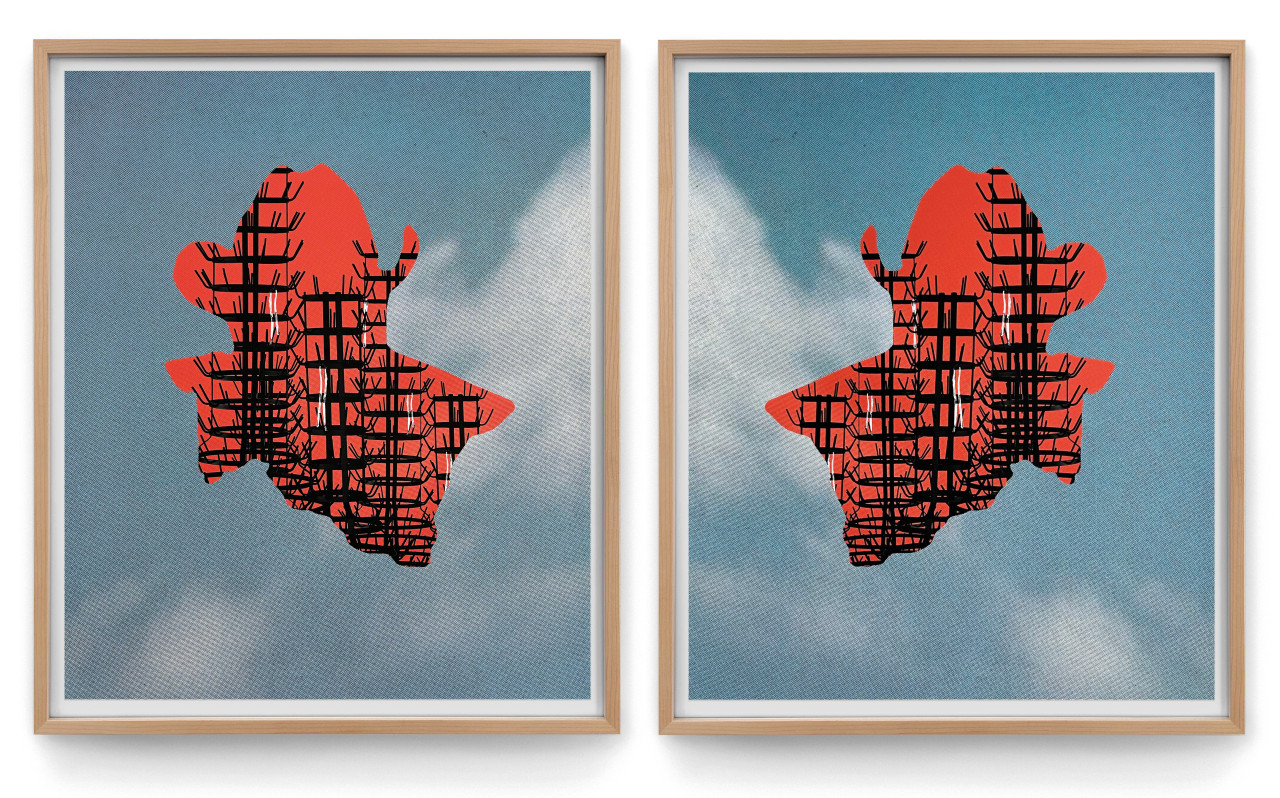
The complex configurations of Kerstin Brätsch's three prints, Untitled (from para psychics expanded series), create a fascinating ambivalence between physical and psychic form. Representational biomorphic appearances seem to emerge from the finely graduated, blurred abstract-painterly images, reminiscent of the Rorschach test. Do we detect an alien figure? Do we identify eyes? Perhaps even a mouth? Does the face look hostile or friendly? Do we recognise emotions at all?
From FACES
Three digital pigment prints on Hahnemühle 300g rag paper, hand-torn, each 60 x 50 cm. Edition of 45 + 8 AP, each signed and numbered on label verso.
Each EUR 1,100
Triptych EUR 3,000
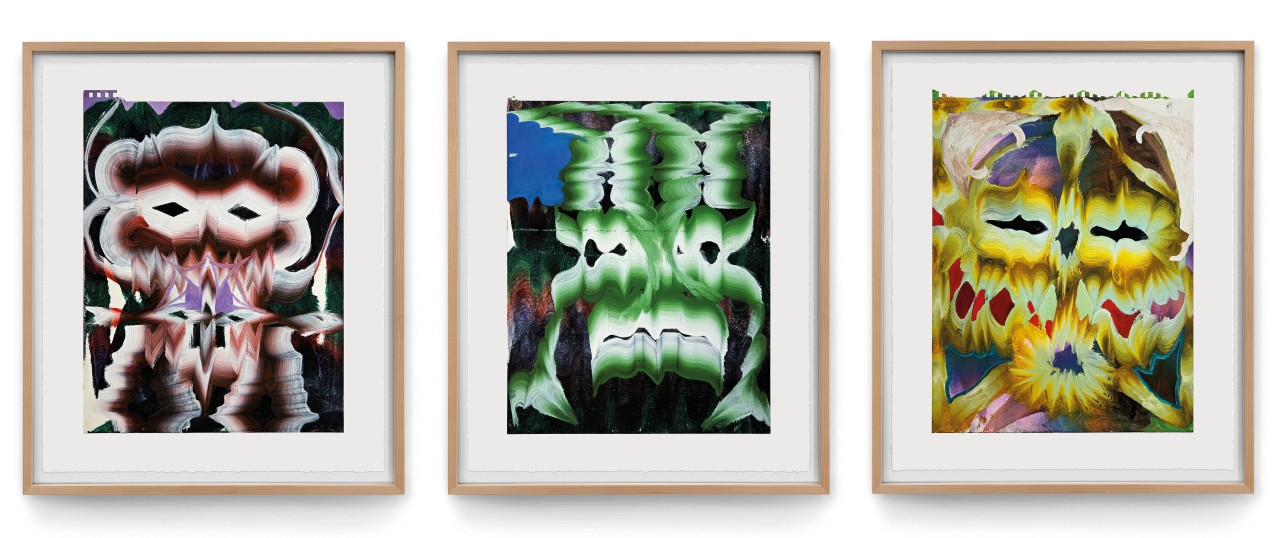
The two sets of eyes looking at us in Liam Gillick's work Printed Gallerist C++ represent characters referred to in the essay for The Philosopher: Artist A -+ and Artist +- alongside their critical doubles – theorist, curator and gallerist. The essay describes how the contradiction between Artist A -+ wanting to be outside and being pulled in and Artist A +- wanting to be inside and being permanently self-excluded, lends contemporary art its tension and its staying power. The difficulty in pinning down contemporary art is due to the paradoxical condition of its producers, who both exist inside and outside of philosophy at the same time. There is an endless pull towards philosophy for Artist A-+ and an alienation from it for Artist A+-. Artist A+- cannot reach a condition where they are fully operating within philosophy. This is because they cannot fully enter the territory of philosophy without giving up the condition of endlessly becoming an artist.
Here, these cartoonised eyes, each with different coloured scleras (the white of the eye) are framed by either horizontal or vertical bars. The disembodied eyes look down upon us, framed by vestiges of abstraction that are derived from the contemporary language of cladding, renovation, building systems and optimisation.
From FACES
Two digital pigment prints on Hahnemühle 300g rag paper, hand-torn, each 60 x 50 cm. Edition of 45 + 8 AP, each signed on label verso and numbered on the print.
Each EUR 1,200
Diptych EUR 2,300
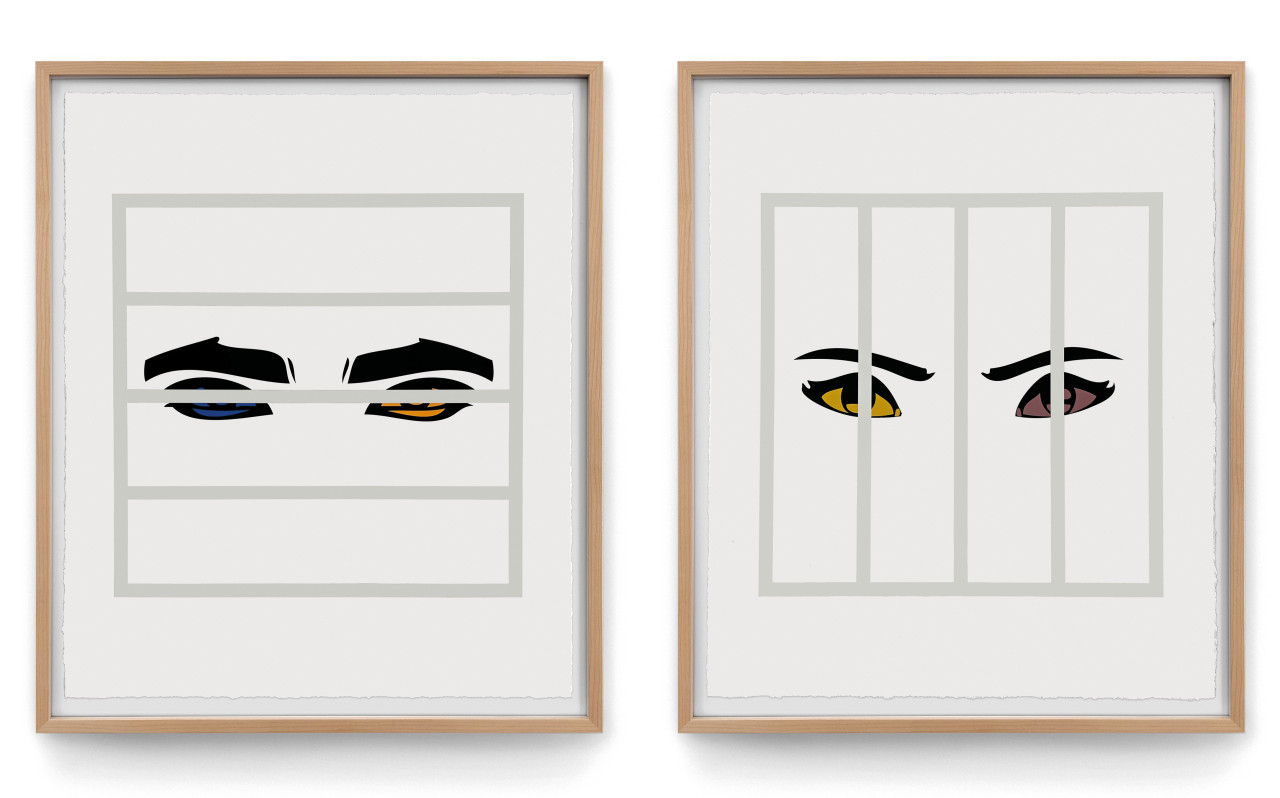
Mona Hatoum's series of Static Portraits was made with a large-scale Polaroid camera during a residency at MassArt in Boston. To create these images, the artist would had subject hold on to a Van de Graaff generator – an electrostatic generator which uses a moving belt to accumulate electric charge on a hollow metal globe on the top of an insulated column, producing very high voltage direct current electricity at low current levels – to cause their hair to stand on end.
From FACES
Three digital pigment prints on Hahnemühle 300g rag paper, hand-torn, each 60 x 50 cm. Edition of 45 + 8 AP, each signed on label verso and numbered on the print.
Each EUR 1,500
Triptych EUR 4,200
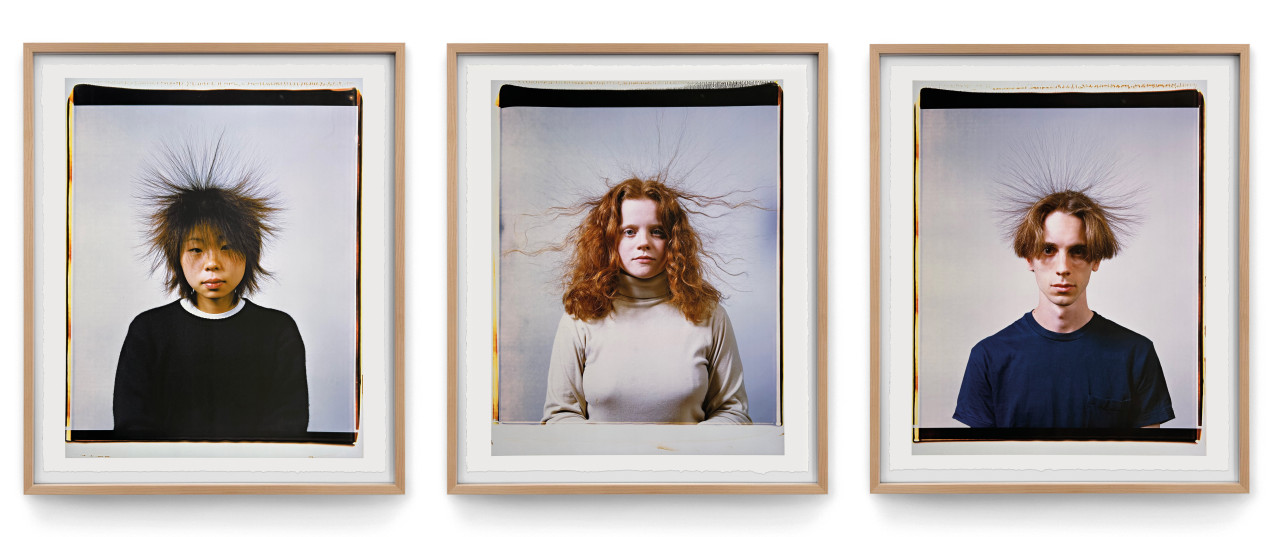
The Rwanda Project, a six-year project that served as a tribute to the victims lost in the Rwandan genocide and a critique of the Western world's indifference to one of the most violent conflicts of recent history, is one of Alfredo Jaar's best known works. On this project and the powerful image that his two-part print The Eyes of Gutete Emerita is based on, the artist says: "I visited Rwanda to witness the genocide of a million people in less than 100 days, in the face of the barbaric indifference of the so-called 'world community'. I took thousands of pictures, some of the most harrowing scenes I had ever experienced. But I discovered later that I could not exhibit them. I had to create a new strategy to attempt representing the horror. This work for Faces is one such exercise."
From FACES
Two-part digital pigment print on Hahnemühle 300g rag paper, hand-torn, each 50 x 60 cm. Edition of 45 + 8 AP, signed on label verso of the second work, numbered on the print itself.
EUR 3,000
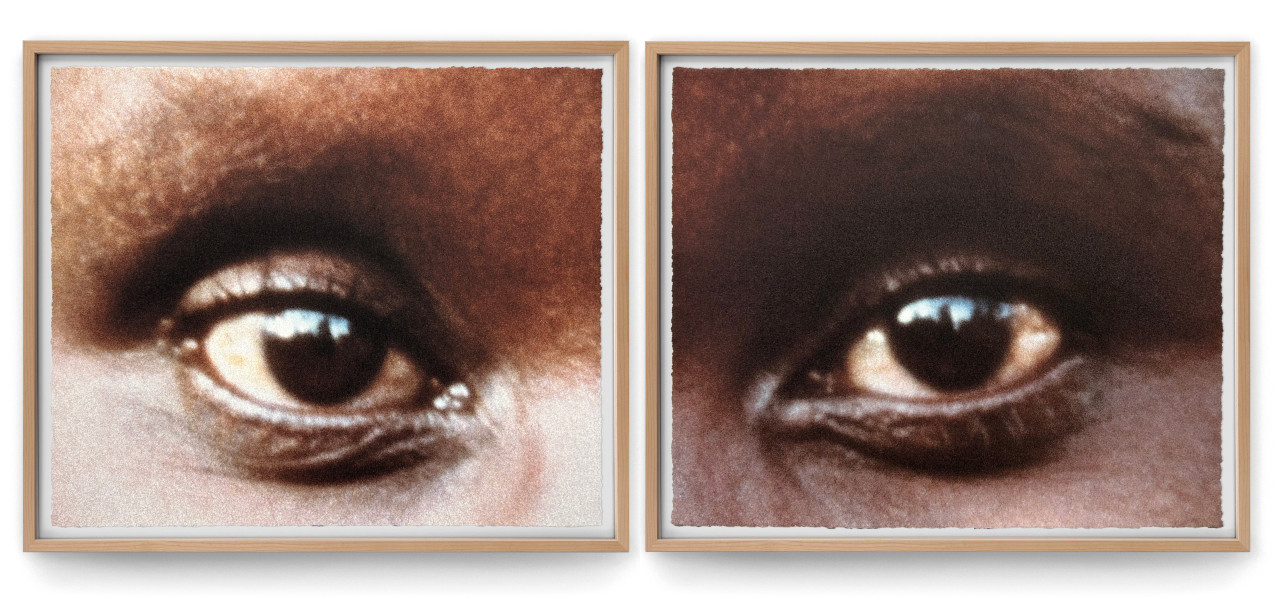
This set of prints by Shirin Neshat is based on her film Roja, which draws from her own recurring dreams, memories, and desires, and traces an Iranian woman's disquieting attempts at connection with American culture while reconciling her identification with her home country. Encountering her own sense of alienation from both, the titular protagonist experiences how both the foreign and the familiar can become unnerving and hostile. Throughout the film, Neshat estranges American landscapes – the utopic attempts of government architecture and coal mines that evoke the terrain of the Middle East – to situate Roja within an ambiguous psychic and political terrain.
From FACES
Two digital pigment prints on Hahnemühle 300g rag paper, hand-torn, each 50 x 60 cm. Edition of 45 + 8 AP, signed and numbered on label verso of the second work.
Diptych EUR 4,200
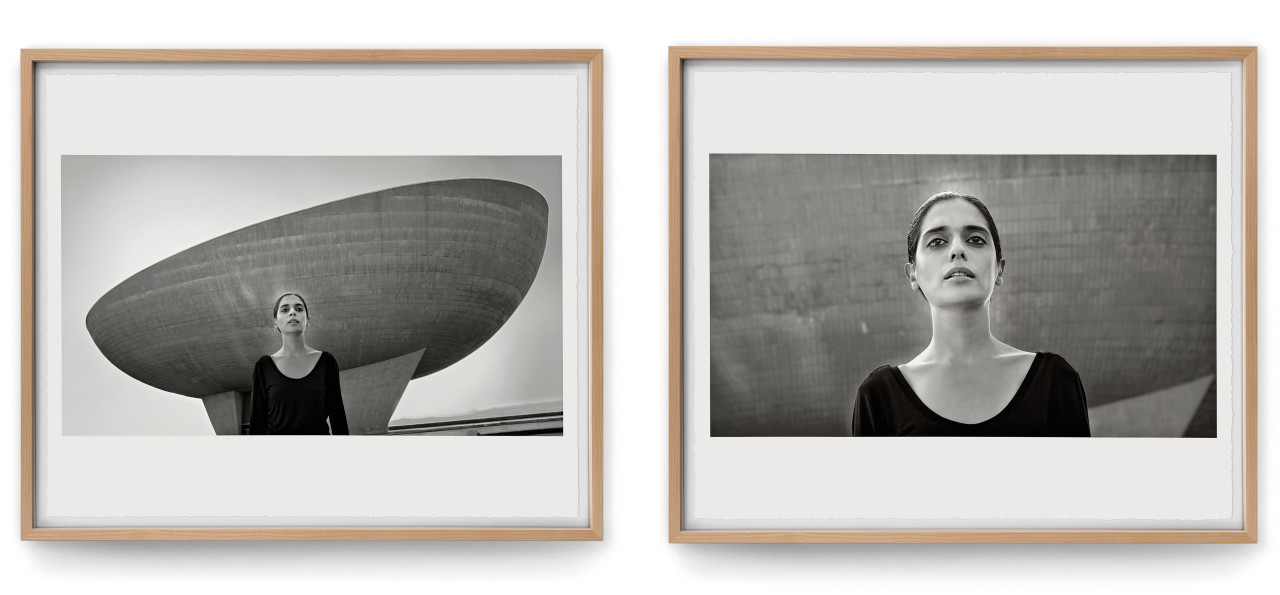
For his contribution to the FACES portfolio, Tony Oursler drew from two different projects of his: Recognition and b0t / fl0w - ch@rt.
Works A and B (from Recognition) highlight Oursler’s interest in the proliferation of big data and surveillance programs, and particularly the ramifications of facial recognition technology. This increasingly ubiquitous tool is used across public, private, and government sectors to track and identify facial features, thereby allowing computers, for the first time, to achieve their own "vision" of us. These "data portraits" underscore Oursler's uneasy relationship with technology, surveillance, and all manners of data tracking. The artworks seem to gaze at the viewer, evoking the larger cultural question of who is watching whom.
Work C is based on the artist's b0t / fl0w - ch@rt project, where robotic mixed media glass sculptures with artificial intelligence, miniature flat screens and exposed computer circuitry and a variety of materials were figuratively arranged and shown next to two dimensional screens based on flow charts. The chimerical bots relate to Oursler's ongoing interest in our day to day interactions with technology and question the intelligence of the A.I.-systems.
From FACES
Three digital pigment prints on Hahnemühle 300g rag paper, hand-torn, each 60 x 50 cm. Edition of 45 + 8 AP, each signed and numbered on label verso.
Each EUR 1,100
Triptych EUR 2,700
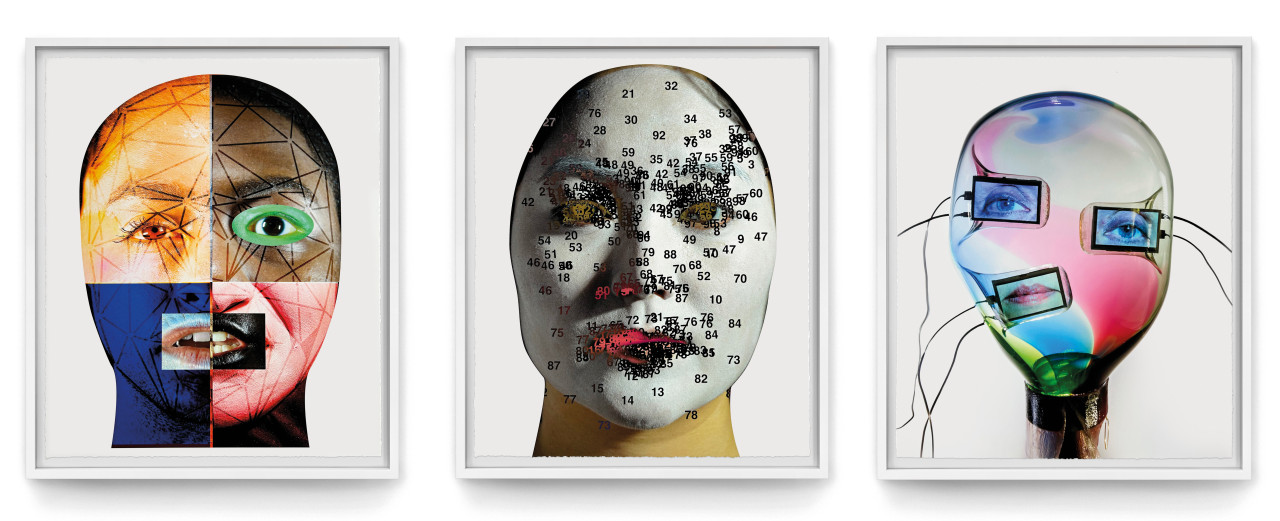
The love story between Bacchus (also known as Dionysus) and Ariadne from Greek mythology has inspired many an artwork, including Young Couple (formerly: Bacchus and Ariadne), 1505-1510 by Tullio Lombardo and Titian's oil painting Bacchus and Ariadne, 1522-1523.
For his collage print A prima vista (At First Sight), Giulio Paolini placed a portrait of the two 16th-century figures, united by the whiteness of marble, in the foreground of and below an image of a blue sky, creating a harmonious composition that captures Bacchus and Adriane's love at first sight.
From FACES
Digital pigment print with collage on Hahnemühle 300g rag paper, hand-torn, 60 x 50 cm. Edition of 45 + 8 AP, signed on label verso, numbered on the print itself.
EUR 2,000
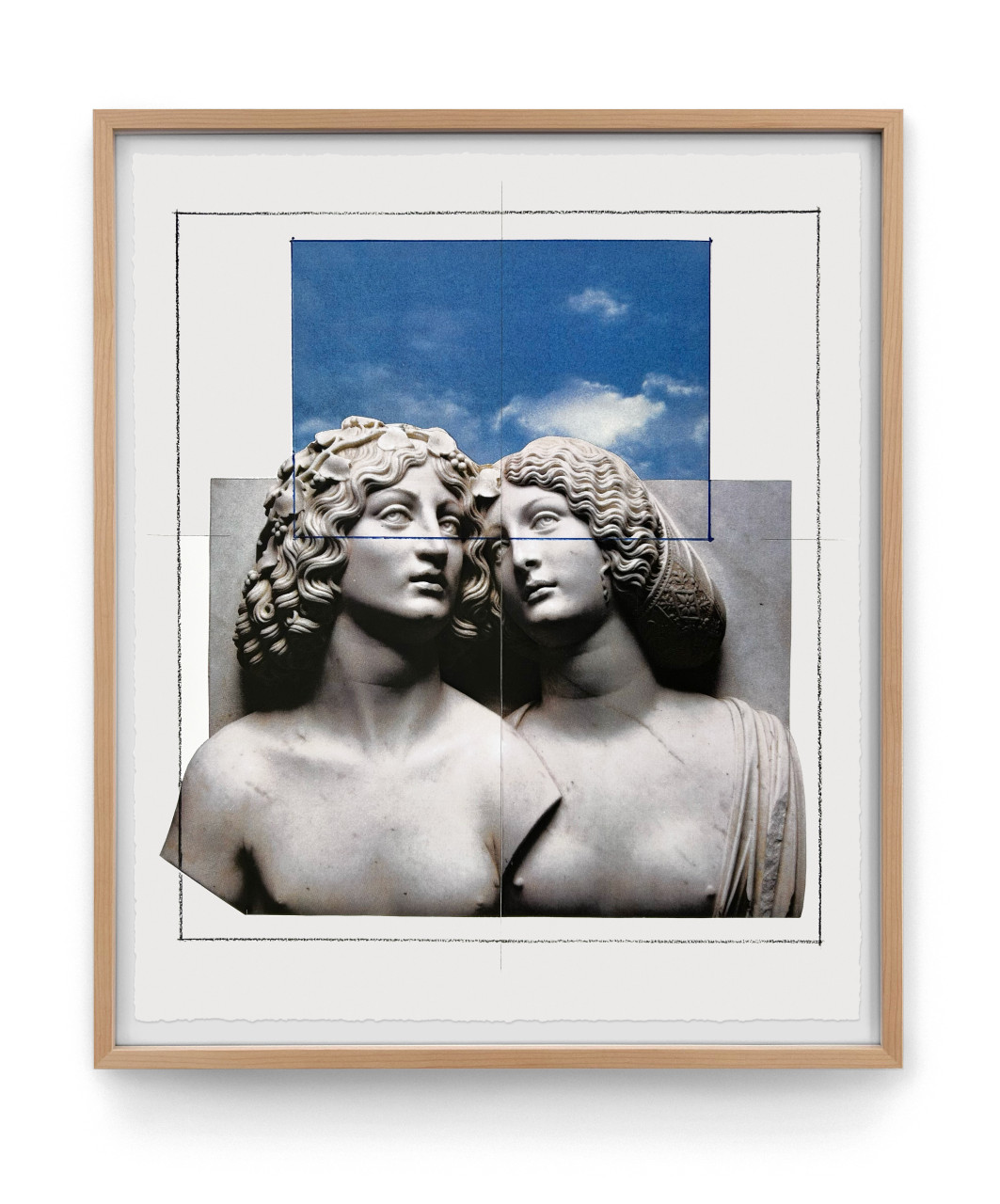
For this group portfolio, Thomas Ruff chose three prints from three different work groups, each illustrating a different way of taking portraits in the history of photography.
Ruff's series Negatives consists of historical photographs that he transformed into digital negatives, changing the light-dark distribution of the image and turning the brownish hue of the originals printed on albumin paper into a cool, artificial blue tone. This gives the first work of this triptych a unique, timeless look, while the image itself reads as a classical portrait.
The artist's series press++ is based on press photographs from the 1930s to 1980s, originating primarily from the archives of American newspapers and magazines. Thomas Ruff scanned the front and back sides of the original documents and superimposed the image with the content appearing on their verso, including handwritten records of the subjects' names, instructions on how to print the photograph, agency stamps, scrawled dates, yellowed remains of adhesive tape, retouched areas, ink stains and fingerprints. The image chosen for FACES is a glamorous portrait of an Old Hollywood actress with the additional colour and text elements from the original document's verso creating an interesting collage effect.
The third work from this triptych is based on a portrait the artist took in 1987. Around 1980, Ruff began to intensively portraiture as a genre and chose to photograph his subjects as if they were a plaster bust, eschewing any form of emotional involvement. Ruff intuitively chose as models for these portraits people he knew personally – friends and acquaintances of his own age whom he had met at the academy or through the Düsseldorf nightlife scene.
From FACES
Three digital pigment prints on Hahnemühle 300g rag paper, hand-torn, each 60 x 50 cm. Edition of 45 + 8 AP, each signed on label verso and numbered on the prints themselves.
Each EUR 1,800
Triptych EUR 5,000
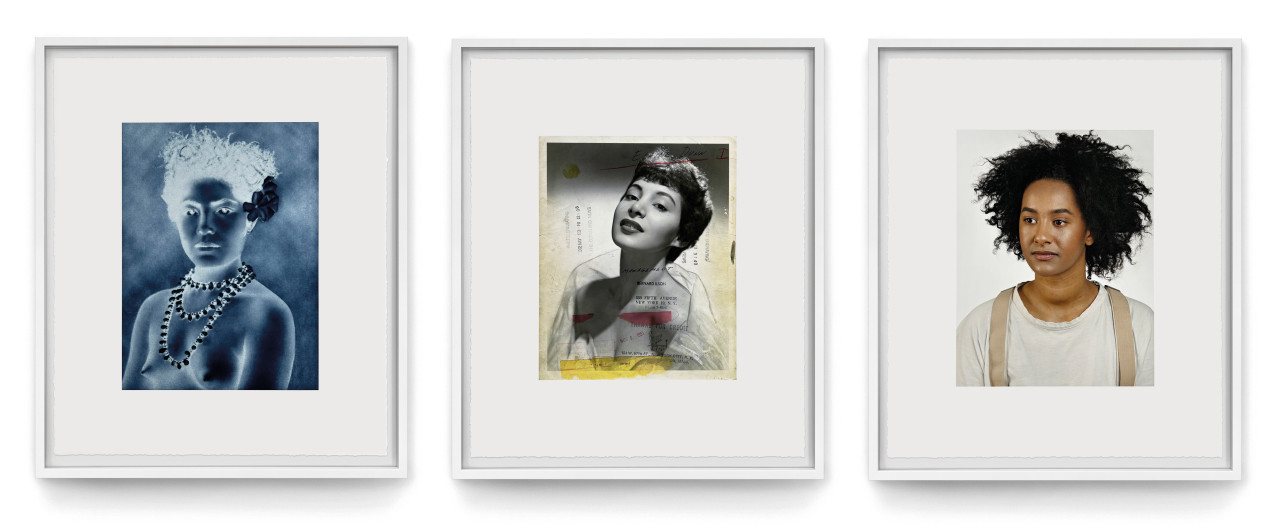
Each of Thomas Scheibitz's three faces is an interplay of colour and geometric shapes – seemingly abstract, yet strongly expressive. Depending on your interpretation of each image, their respective titles may seem fitting or surprise you.
About these works, the artist says: "Portraits or heads are one of the most important sources for me when observing people. The transformation into a picture or a sculpture begins independently of patterns of similarity or direct recognisability. What interests me is a character that can become visible."
From FACES
Three digital pigment prints on Hahnemühle 300g rag paper, hand-torn, each 60 x 50 cm. Edition of 45 + 8 AP, each signed on label verso, numbered on the prints themselves.
[The order of the three works as a triptych is determined by the artist.]
Each EUR 1,200
Triptych EUR 3,200
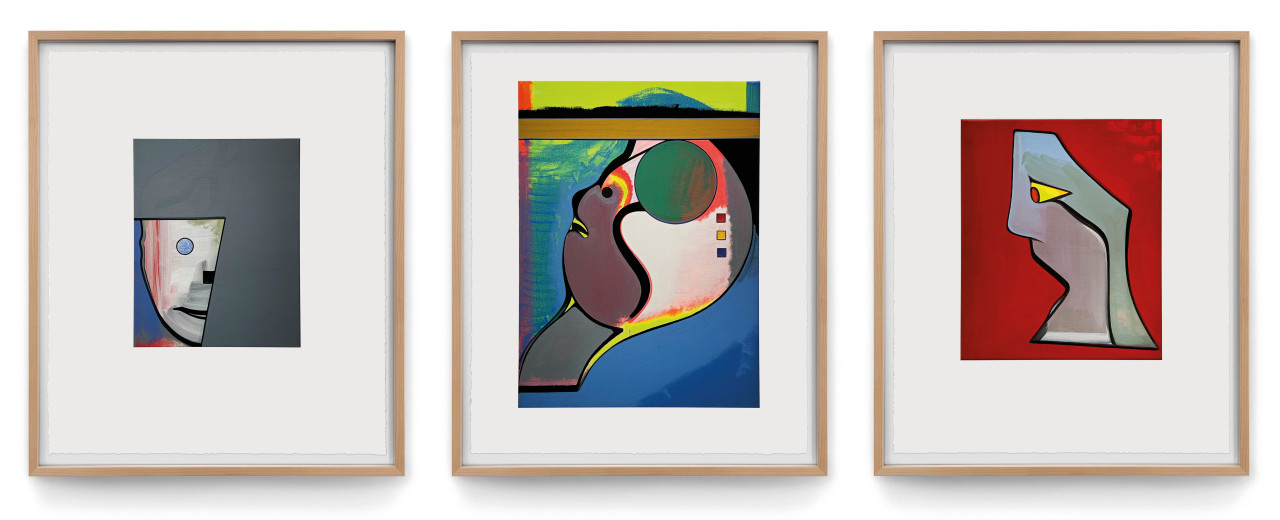
Santiago Sierra's self-portrait shows the artist from behind, therefore not really showing him at all. The idea that not showing is more powerful than doing so is a recurring one in the artist's work in which people are almost always hidden or at least impossible to identify by seeing their faces.
While we can often identify people we know relatively even from behind – simply by looking at their posture, their gait and other personal traits –, without seeing their face, we cannot gauge their emotions or state of mind. This leaves plenty of room for interpretation in this work.
From FACES
Digital pigment print on Hahnemühle 300g rag paper, hand-torn, 60 x 50 cm. Edition of 45 + 8 AP, signed and numbered on label verso.
EUR 1,000
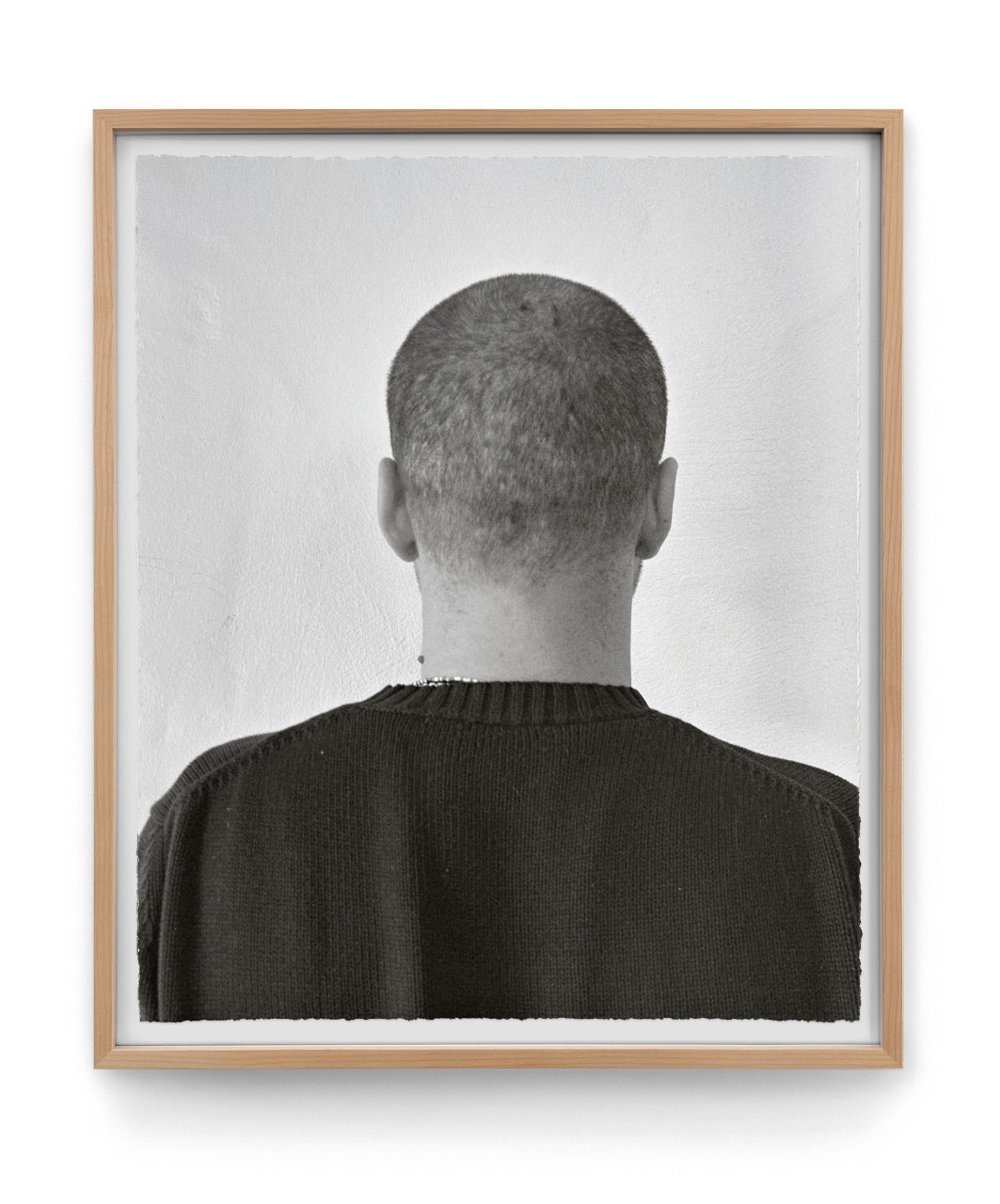
Working from her own recent photographs, Rosemarie Trockel used AI tools to generate two transformed portraits – figures that are both familiar and unfamiliar, intimate yet digitally altered. The resulting two-part work is an exploration of authorship and identity through the lens of artificial intelligence. Furthermore, the somewhat androgynous appearance of the two figures, aptly titled Mavericks – i.e. someone who resists convention and operates independently from established norms – reflects the artist’s enduring critique of gender roles and societal norms.
From FACES
Digital pigment print in two parts, on clear acetate foil, each 50 x 60 cm. Edition of 45 + 8 AP, each signed and numbered on verso.
EUR 2,000
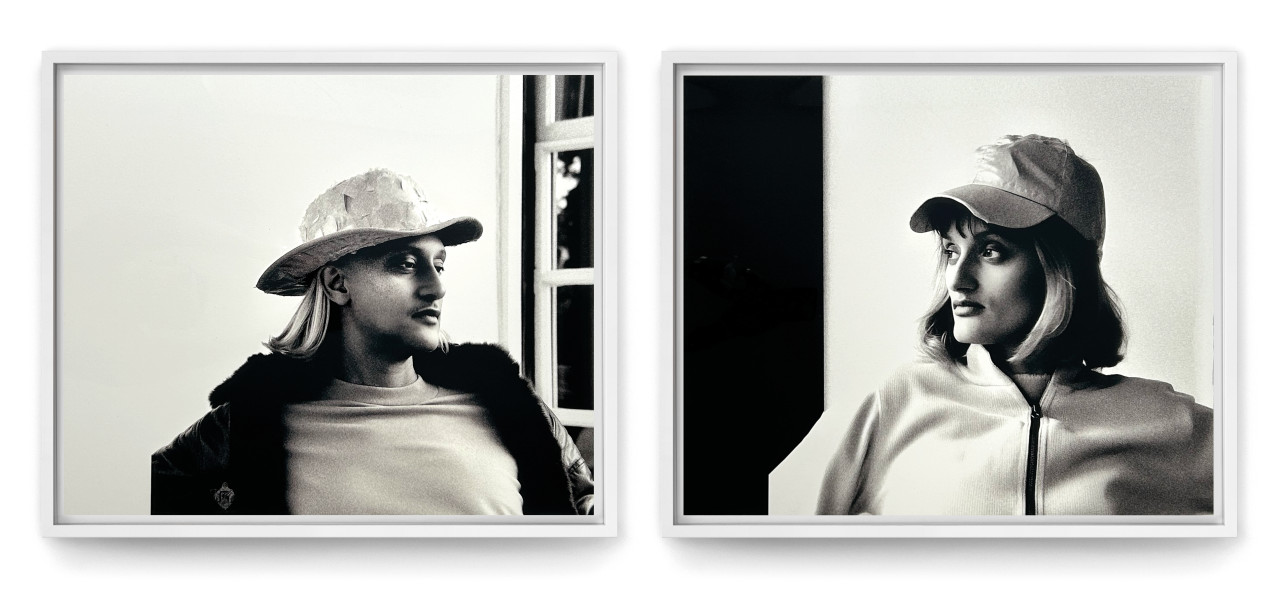
Luc Tuymans' portrait, Win, is kept in subtle pastel colours where the face itself looks both blurry and illuminated. As a result, we focus on the subject's face without being able to read their expression, state of mind or even age.
